Tapered shim stacks produce a digressive damping force curve. Digressive means damping force falls-off at high speed. Changing the damping force curve shape requires adding crossovers or ring shims to modify the force versus lift profile of the shim stack.
There is no secret formula to determine the shim stack modifications needed to produce a specific damping curve. It is all done through hacking. Shim ReStackor rapid calculations makes that simple, easy and intuitive.
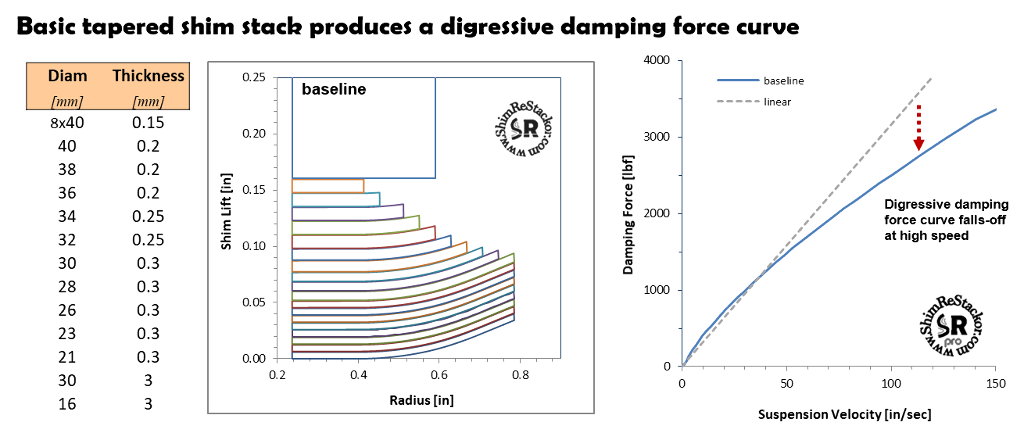
Simple tapered shim stack produces a digressive damping force curve
Shim stack crossover
Crossovers allow the face shims to deflect independent of the high speed stack. Opening the face shims at low speed softens low speed damping and makes the damping force curve “look” more linear.
Changing the crossover position or diameter shifts the damping force curve from digressive toward linear or progressive. Rebound shim stacks typically have a crossover to force a more linear damping force curve (more).
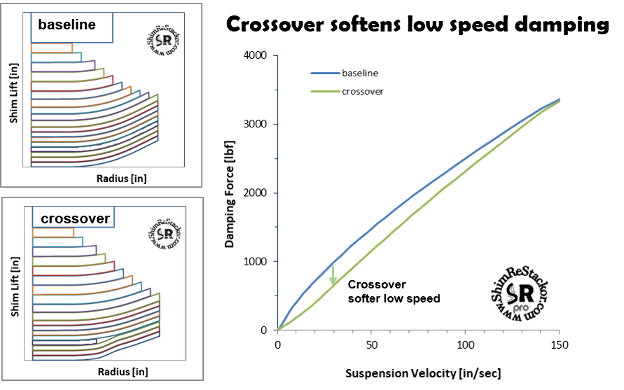
Shim stack preload
Ring shims preload the face shims against the valve face. Preload holds the shim stack closed at low speed and increase low speed damping.
When the shim stack cracks open, damping force drops-off making the damping force curve look more digressive compared to a simple tapered shim stack (more).
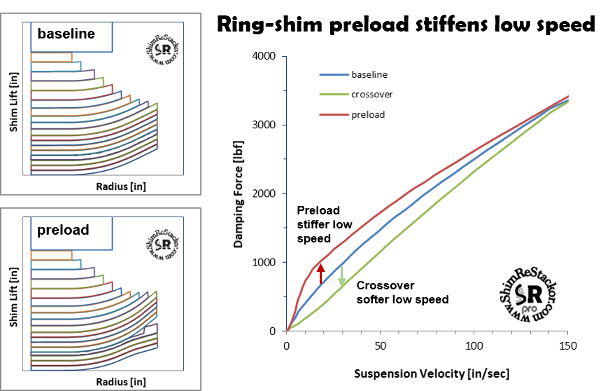
Stiffer high speed damping
Crossovers can be tuned the other way around. Instead of making low speed softer, a crossover can be used to make high speed stiffer.
The example uses stiffer face shims to keep low speed damping the same. After the crossover closes, the high speed stack kicks in increasing the high speed damping force.
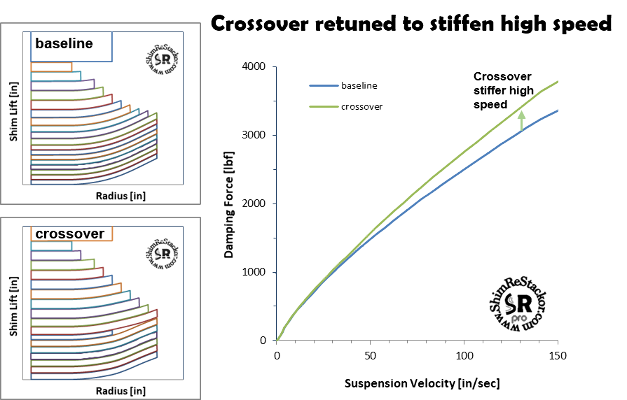
Softer high speed damping
Ring-shims can also be tuned the other way around to make high speed damping softer.
The example removes face shims to soften high speed damping and adds a ring shim to stiffen low speed. By tuning the ring-shim preload low speed damping matches and the softer stack drops-off damping force at high speed. Same low speed, softer high speed.
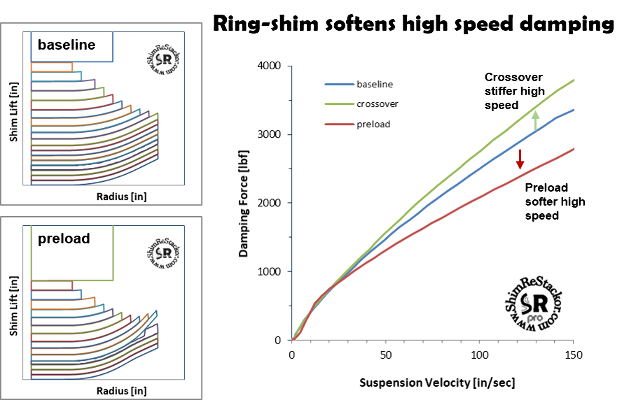
Shim ReStackor introduces a new era in suspension tuning
Adding or removing face shims increases or decreases the entire damping force curve. Pretty simple.
The more challenging tuning application is changing the shape of the damping force curve. Adding a crossover softens low speed damping. But, to keep the same high speed damping the shim stack has to be stiffened to compensate for the crossover gap. Creating the single effect of softer low speed damping requires multiple simultaneous changes to the shim stack. Those changes are hard to “guess”, a skill professional tuners spend years developing (more).
Figuring out the combination of shim stack changes needed to tune a crossover is easy with Shim ReStackor. The calculations show damping force across the entire range of suspension velocities. Perfecting low speed, mid-speed and high speed damping simply requires hacking around on the shim stack, adding or removing shims, crossovers or stack preload until the desired damping force curve is achieved.
The capability to see how the shim stack deflects and the effect each modification has on the damping force curve makes tuning simple, easy and intuitive (more).
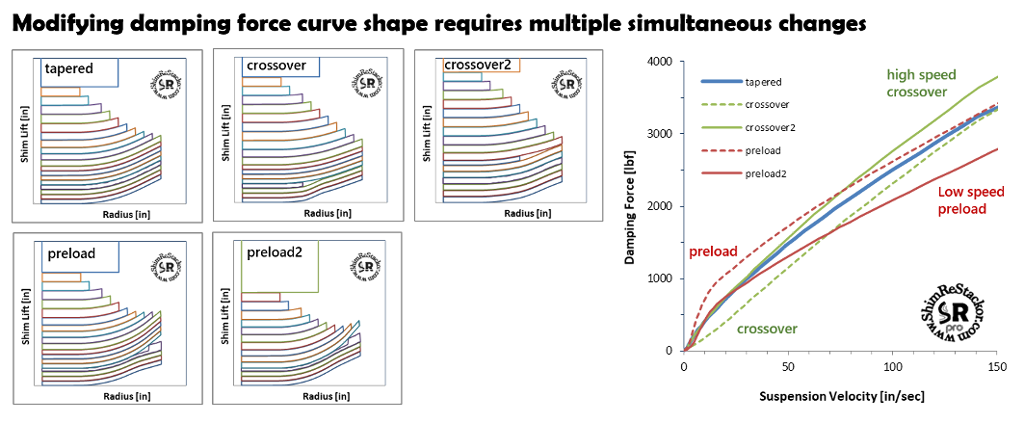
Fine-tune suspension setups far beyond the limits previously possible perfecting performance of complex shim stacks with detailed control of low speed, mid-speed and high speed damping

